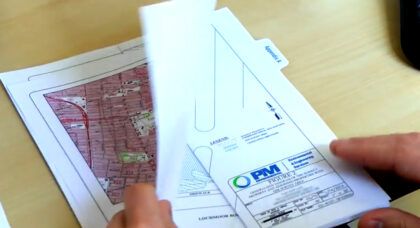Navigating the “Not Justs” of Industrial Hygiene
Don’t let these all-too-common, all-too-costly assumptions about environmental quality and industrial hygiene sideline your next hospital improvement or expansion project.
The American Society for Healthcare Engineering (ASHE) recently published their 2018 Hospital Construction Survey. Among the survey’s many findings, we found one statistic particularly interesting: facilities managers reported that 61 percent of their current construction/renovation projects are at or under budget and on or ahead of schedule. That’s a great testament to the project management expertise of today’s healthcare facilities management professionals.
At the same time, the flipside reveals significant room for improvement: 39 percent of projects are over budget, behind schedule or both. While every delay and overage isn’t the result of failing to anticipate and address issues like asbestos or mold, no doubt some are. That’s why PM Environmental, Inc., (PM) offers our cautionary list of “NOT JUSTS” to help keep your next construction project on track:
Industrial hygiene is NOT JUST an item on a current project’s “punch list”.
Waiting until a project is underway to conduct an environmental survey is asking for trouble. For example, if asbestos is discovered during the course of renovations, both the project timeline and budget will be negatively impacted– often significantly –by the steps involved in abatement.
Environmental air quality and industrial hygiene planning are NOT JUST for “shovel ready” and “greenlighted” projects.
Understanding the environmental risks of a given property can and should factor into strategic decisions, including whether to purchase or pass on, renovate or relocate, or demolish or repurpose a property. As more hospitals are merging services and combining resources, they are turning to PM earlier in property decision-making for due diligence services including Phase I Environmental Site Assessments to manage environmental risks.
Air quality concerns like asbestos and mold are NOT JUST phenomena of buildings “of a certain age.”
Despite the recent decline in new use, enormous amounts of asbestos remain in buildings throughout the United States. Being mindful of how it can affect your future renovation and expansion projects will save you time and money. Regardless of when a building was built, the Environmental Protection Agency’s National Emission Standards for Hazardous Air Pollutants (NESHAP) requires a comprehensive asbestos inspection to be performed before any renovations can happen. The consequences of ignoring the NESHAP mandate can be significant: building owners and contractors working at the facility can be held liable if renovations occur without an inspection, and a single complaint can trigger a state inspection, possible citations and fines.
Environmental quality and safety are NOT JUST priorities in patient areas.
The 2018 ASHE construction survey also revealed that 31 percent of hospitals plan to replace or upgrade their air handling/ventilation systems in the next 12 months – evidence of the tremendous importance of indoor air quality to delivering an optimal patient experience. But air quality is important for all employees – regardless of whether they interact directly with patients. Every work area should be monitored for potential environmental hazards. The best way to manage environmental risks is to incorporate industrial hygiene into ongoing maintenance reviews of every facility on a hospital or health system campus, rather than waiting to react to a staff member concern about air quality.
If asbestos is found, it’s NOT JUST about removing it.
Don’t forget to factor air monitoring into your asbestos abatement plan. When removing friable asbestos, a negative pressure containment or enclosure must be built. Good air quality is vital in healthcare settings, so air sampling after asbestos removal is essential. In Michigan, for instance, staff, patients and others can return to the area only after clearance sampling meets state requirements. Any complaint can trigger inspections, so the best way to eliminate liability is to document that sampling was conducted properly.
Choose the right partner to help navigate environmental risks. NOT JUST any industrial hygiene consultant can do the job.
Look for a firm with the expertise to NOT JUST react to today’s environmental problems, but anticipate tomorrow’s. And demand a track record of discretion at every step in the process, conducting due diligence, screening and mitigation with minimal impact on daily operations and the least possible inconvenience to customers and staff.
As a full-service environmental risk management firm, PM assesses and proactively manages a wide variety of facility-related environmental concerns commonly encountered hospitals and health care facilities.
Our qualified staff includes certified industrial hygienists, asbestos and lead paint inspectors, biologists, engineers, and environmental scientists.
PM takes a total project management approach to environmental risk management, encompassing:
- Comprehensive asbestos, lead paint and hazardous materials management programs for renovation and demolition projects
- Lead paint inspections using our non-destructive X-Ray Fluorescence (XRF) analyzers for on-site testing
- Indoor air quality assessments that examine heating, ventilation and air-conditioning (HVAC) systems for all potential sources of air pollutants, including moisture and mold contamination, allergens, radon, pesticides and more
- Preparation of bidding specifications and management of the bidding process
- Oversight of removal activities, including the management of facility decommissioning projects involving the removal of asbestos containing materials, industrial wastes and regulated building wastes
- Third-party and worker exposure air monitoring
- Documentation of compliance with project specifications and local, state and federal regulations
Talk to us today!
Publication Details
Date
July 18, 2018



